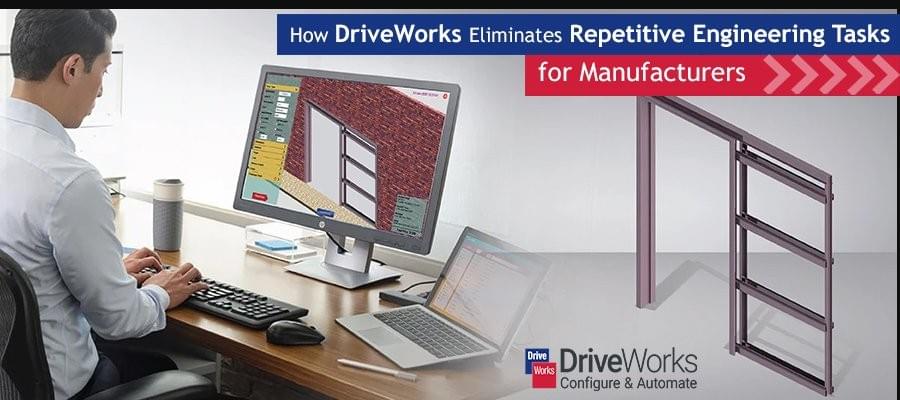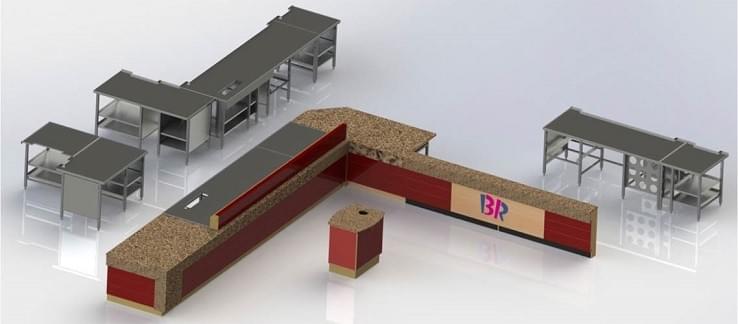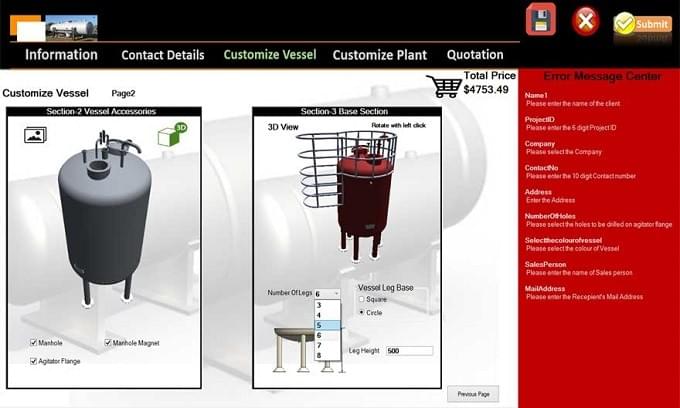
In today's era of great disruption, customer experience has become the key competitive differentiator that decides the success of a brand. For the manufacturing industry, customer experience is all about faster product deliveries with exceptional customization capabilities. Delay or failure to meet customers' expectations can lead to losing sales, resulting in revenue losses and degraded brand loyalty.
By implementing DriveWorks, manufacturers can automate the repetitive design modeling and drafting tasks and accelerate design development. It hopes you ensure custom quote accuracy and reduce time to market.
Common challenges manufacturers face with manual design processes
1. Lengthy design cycles due to customization
Every time a customer approaches manufacturer they have a series of customization requests in an existing product. This makes the manufacturer to go through a customized drawing and design cycle having longer lead times.
2. Inaccurate sales quotes
In the rush to meet timelines yet offer personalized products to customers, manufacturers speed up quotes. But it ends up in errors without thorough and strict quality check. It deems reputation and customers tend flee.
3. Incomplete product visualization for customers
A 360-degree product visualization increases product tangibility and creates an immersive experience. Without it, the customer may end up asking revisions or be unsatisfied with their purchase.
How DriveWorks eliminates the repetition of engineering tasks
1. Logical rules automate the design development stage
A typical product engineering design encompasses similar components and parts but with varied dimensions, tolerances, and forms. Configuring such parts every time a design request comes, makes the complete process tedious and inefficient.
DriveWorks automates the design development stage by offering a flexible and highly-configurable solution to design parts and components. The built-in intelligent rule-builder enables engineers to build custom rules and even logics to complete tasks automatically.
A leading Retail food store furniture Manufacturer observes accelerated product deliveries due to DriveWorks extensive design automation features. DriveWorks implementation eliminated manufacturer challenges caused by legacy 2D drawings for custom furniture models.

Additionally, the interactive user interface equipping powerful diagnostic tools and a self-help browser ensure rules are built faster and seamlessly. Leveraging such exceptional design automation capabilities, engineers are able to customize designs without spending hours on repeating mundane tasks.
2. Sales quotation through configurator using ERP integration
A DriveWorks sales configurator enables customers to configure a custom design model that clearly depicts their choice of customization from finishing to color, form, and functionality. Based on the configured customization, DriveWorks, a sales quote is generated and shared with the customer with accurate delivery dates without any or little intervention from the sales team.
It is also possible to offer proactive selling assistance to help customers in buying decisions based on their budget and requirements. This saves the sales team from going back and forth among the internal teams to generate sales quotes. The chances to share inaccurate quotes are almost reduced to zero, which improves productivity.
DriveWorks online configurator helps automate designs and share quotes through a configurable pressure tank model. The implementation successfully eliminated inaccurate and lengthy quotation processes due to higher customization. It also improved drawing quality with accuracy in BOMs and geometrical details.

Furthermore, it integrates with CRM, ERP, SCM, etc. along with SolidWorks enable complete automation from sales to manufacturing.
DriveWorks generated Hydraulic Hose Configurator enables Custom Hydraulics Equipment Manufacturer to reduce the overall cycle time by 95%. DriveWorks implementation successfully eliminates high design cycle times and enormous errors due to manual customization.

3. Customized 3D models that accept real-time inputs
Nothing beats the experience of developing your own custom 3D model that gives you glimpses of the final product. With DriveWorks, it is possible to create customized 3D models accepting real-time inputs. This feature gives customers the freedom to design their products by choosing geometrical specifications, forms, finishings, and other features.
DriveWorks' interactive platform updates inputs in real-time, enabling customers to view the actual product design even before raising a request for it. This reduces unnecessary design iterations that usually arise due to the ever-changing opinions and mindset of the customer.
With fewer design iterations, the manufacturing process starts and finishes smoothly, increasing the overall productivity of the process.
DriveWorks implementation for metal and wood furniture manufacturer helped reduce the lead time from 4-5 days to one day and ensured a 70 times faster design cycle. The automated quotation facility and offshore design resulted in 60% cut on design costs.
Conclusion
The manufacturing industry often faces challenges in meeting custom design requests as it involves the repetition of tasks, which is both time-consuming and tedious to work with. However, with smart design automation features offered by DriveWorks, it is possible to accelerate design cycles and enhance customer experience.
From built-in macros to online product configurators, the solution empowers engineers, designers, manufacturers, and even customers with better design flexibility, leading to a better experience altogether.
About Author:
Usha B. Trivedi is a mechanical design engineer at TrueCADD – a company invested in industrial CAD drafting, modeling, and design automation. Ms. Trivedi writes about solution finding approach in CAD and design automation challenges backed by her years of exploration in industrial designing in furniture, millwork, and metal fabrication designs.